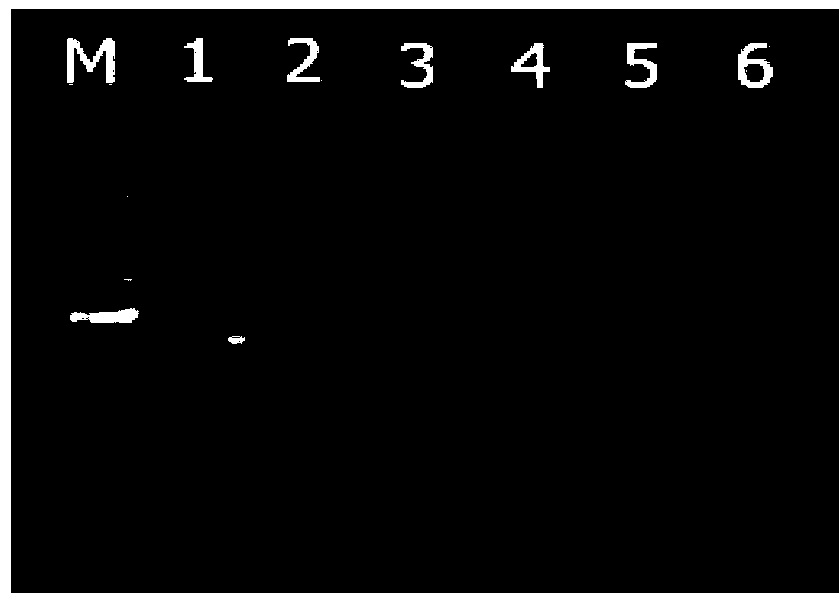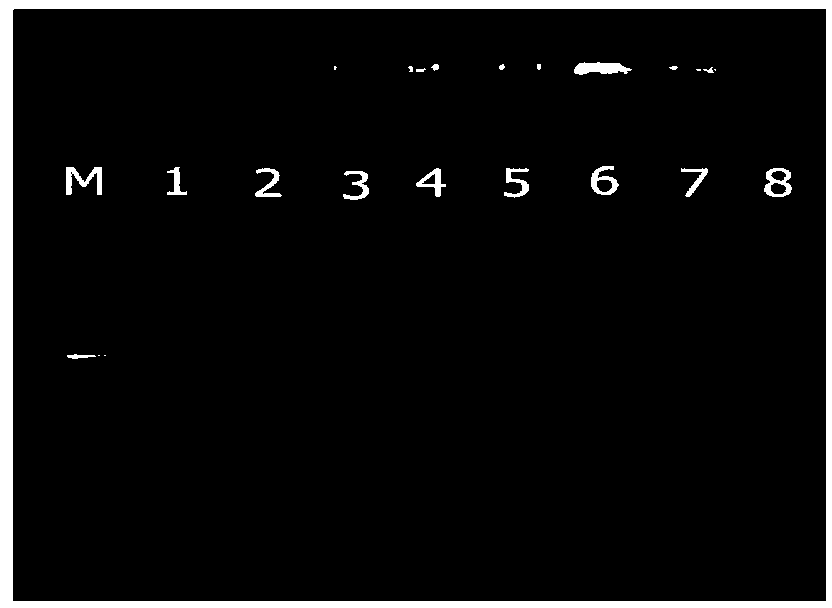Method to detect dendroctonus valens and detection kit
A detection reagent and target technology, applied in the field of molecular biology, can solve the problems of invasion, misidentification, pathogen infection and pests, etc., and achieve the effect of strong specificity, high sensitivity and high sensitivity
- Summary
- Abstract
- Description
- Claims
- Application Information
AI Technical Summary
Problems solved by technology
Method used
Image
Examples
Embodiment 1
[0039] Example 1 Determination of the DNA sequence of the red beetle COI gene
[0040] The present invention repeatedly compares and screens the COI gene of the red beetle with the nucleotide sequences of other insects published on NCBI, and finds that the homology of the COI gene within the species of the red beetle reaches 99%, while that of other insects is similar to that of other insects. The sequence divergence is large, which can be used to distinguish the red beetle from other species of insects.
Embodiment 2
[0041] The extraction of embodiment 2 insect genome DNA
[0042] The insects involved in this experiment are Scolytus schevyrewiSemenov, Xyleborus artecomans Schedl, Xyleborus interjectus Blandford, Blastophagus minor Hartig , Dendroctonus valens LeConte, provided by Beijing Entry-Exit Inspection and Quarantine Bureau. Insect genomic DNA was extracted using BIOMIGA's EZgene TM Insect gDNA Kit (GD2413-02) kit.
[0043] Specific steps:
[0044] (1) After the insect specimens soaked in pure alcohol were cleaned and dried with an ultrasonic instrument, the heads and elytra of the adults were removed, and the abdominal tissues of the larvae were taken. Tissues <50mg were thoroughly ground in a mortar and placed in a 1.5ml centrifuge tube.
[0045] (2) Add 350ul of Buffer ITL and 25ul of proteinase K (25mg / ml) to the centrifuge tube, mix thoroughly and place in a constant temperature water bath at 60°C for two hours until the tissue is completely digested.
[0046] (3) Add 350...
Embodiment 3
[0055] Embodiment 3 detects the design of the primer of the nest PCR of red fat beetle
[0056] 1. Design of universal primers
[0057] Synthesize a pair of universal primers LCO1490 and primer HCO2198 for amplifying the longhorn COI sequence according to the published insect COI sequence. The primer sequences are as follows:
[0058] LOC1490: 5'-GGTCAACAAATCATAAAGATATTG-3' (SEQ ID NO. 1),
[0059] HCO2198: 5'-TAAACTTCAGGGTGACCAAAAAATCA-3' (SEQ ID NO. 2). The total volume of the PCR amplification reaction is 25 μl, and the amount of each reaction system added is:
[0060]
[0061] After mixing, put it into a PCR machine for amplification. The amplification program is: pre-denaturation at 94°C for 5 minutes, denaturation at 94°C for 30 seconds, refolding at 53.7°C for 45 seconds, extension at 72°C for 1 minute, 35 cycles, and finally extension at 72°C for 7 minutes. A blank control was made with sterile distilled water for each reaction to eliminate systematic errors. Mi...
PUM
 Login to View More
Login to View More Abstract
Description
Claims
Application Information
 Login to View More
Login to View More - R&D
- Intellectual Property
- Life Sciences
- Materials
- Tech Scout
- Unparalleled Data Quality
- Higher Quality Content
- 60% Fewer Hallucinations
Browse by: Latest US Patents, China's latest patents, Technical Efficacy Thesaurus, Application Domain, Technology Topic, Popular Technical Reports.
© 2025 PatSnap. All rights reserved.Legal|Privacy policy|Modern Slavery Act Transparency Statement|Sitemap|About US| Contact US: help@patsnap.com



